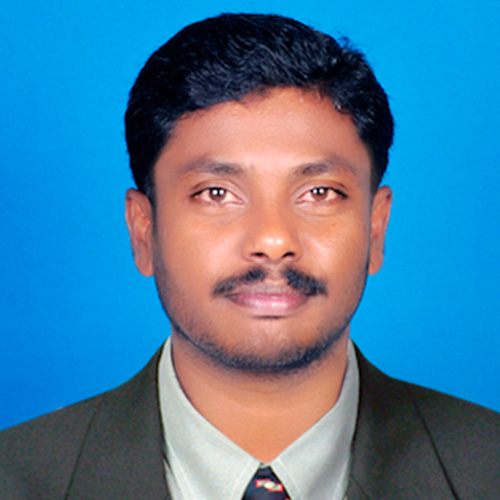
Mariappan Rajan
Country (Nationality)
India
Grantee Title
Project: Design and development of multi-properties encompassing materials for diabetic ulcers tissue engineering
Grantee Description
Rajan is currently an Assistant Professor at the Department of Natural Products Chemistry, School of Chemistry, Madurai Kamaraj University, Madurai, Tamil Nadu, India. Rajan's Biomaterials in Medicinal Chemistry laboratory (BMCL), is mainly interested in the development of biodegradable polymeric nanocarrier systems, nanogels, nanoparticles, nanocomposite scaffolds, bio-ceramic materials and mineral substituted scaffold for tissue engineering, drug delivery and wound dressing applications. Currently, he is handling various research projects, and supervising master’s and PhD students. Rajan also has extensive international research collaborations with researchers in South Africa, Taiwan, Malaysia, Saudi Arabia, Qatar, Italy, and India. He has multiple editorial duties in many reputed international journals.
Project: Design and development of multi-properties encompassing materials for diabetic ulcers tissue engineering
Diabetic pathologies are a global concern, resulting in major medical, social and economic burden for patients, caregivers and government health care systems alike. Numerous materials have been developed for diabetic wound healing. However, these materials are difficult to handle, have poor adherence to the wound bed, and are non-absorbent which allows wound exudate to accumulate that increases bacterial invasion and infection at the site of injury. Traditional plants like Senna auriculata, Gymnema sylvestre, and Ficus carica and their poly-phenolic natural compounds have attracted attention of researchers because of their anti-diabetic, anti-oxidant, and anti-inflammatory properties. The newly developed wound healing nanocomposite-based bandages will consist of the natural anti-diabetic drug (ND), poly-phenolic compound (PP) and extracellular matrix mimicking polymer (cellulose, pectin, chitosan, poly maltitol, poly xylitol, poly urethane etc.,) (P) coupled with CNT/GO/fiber. Rajan will be working with Dr. Nicolette Houreld at University of Johannesburg to assess the wound healing property of this bandage in vitro diabetic wound model in WS1 cell lines (human skin fibroblast cells).
